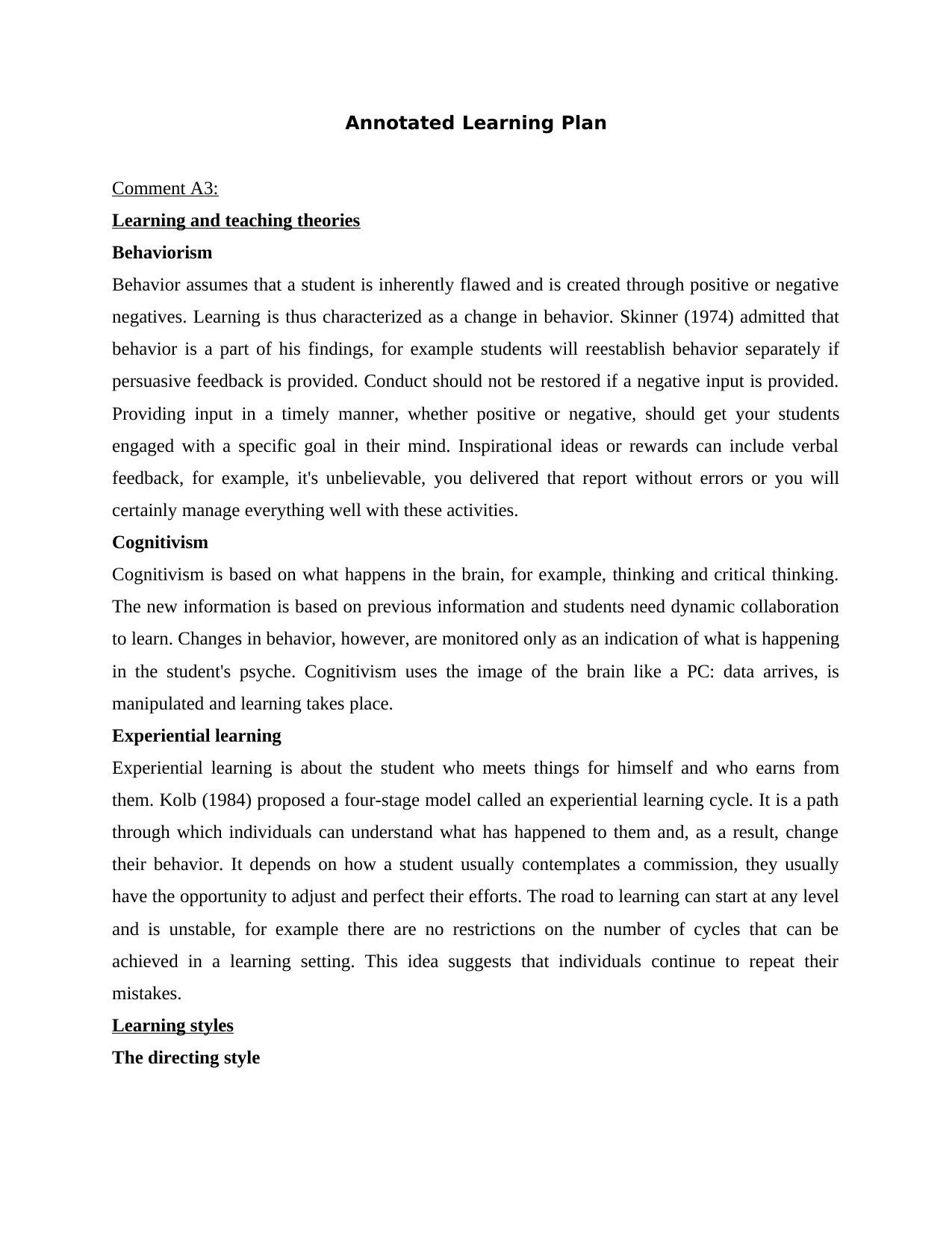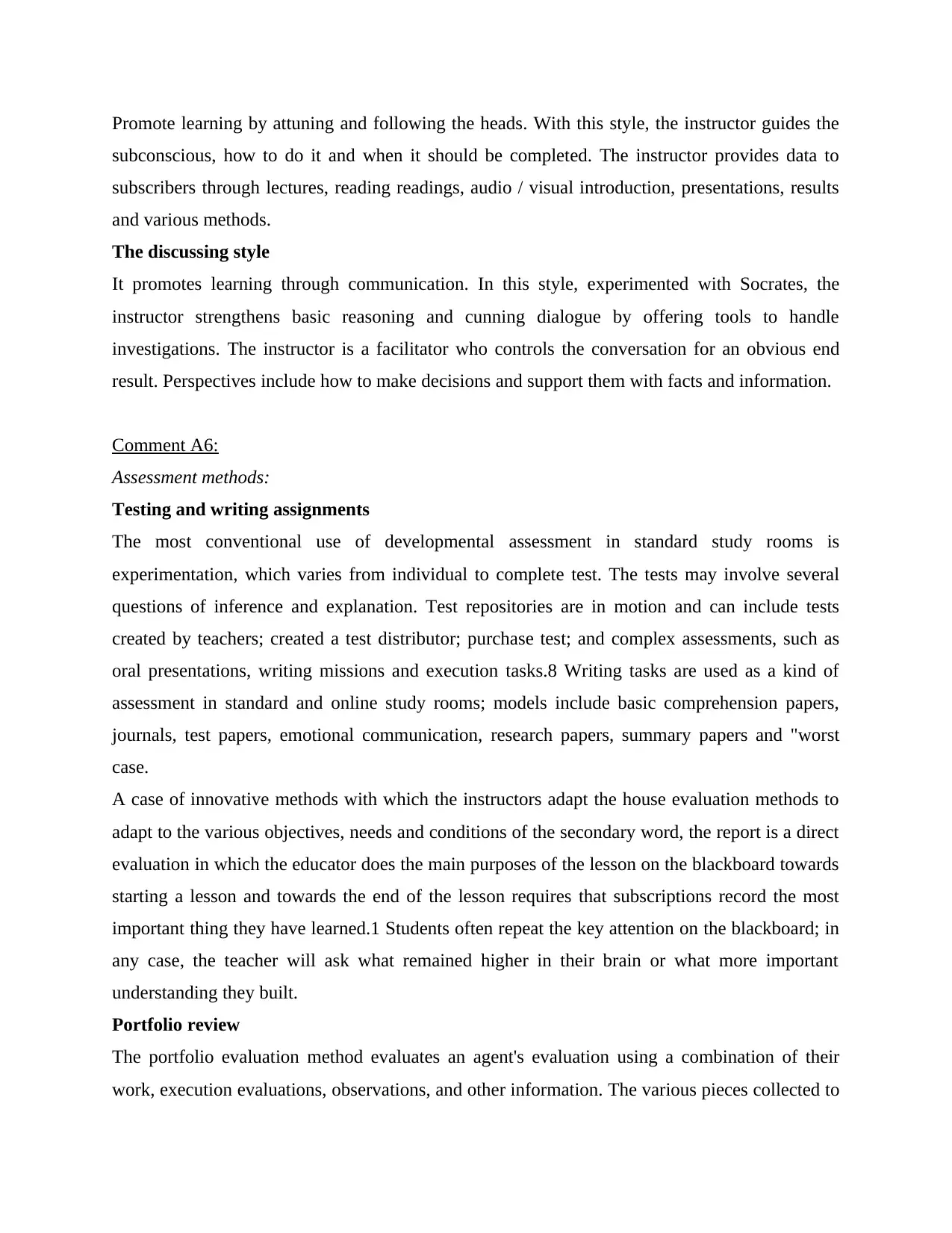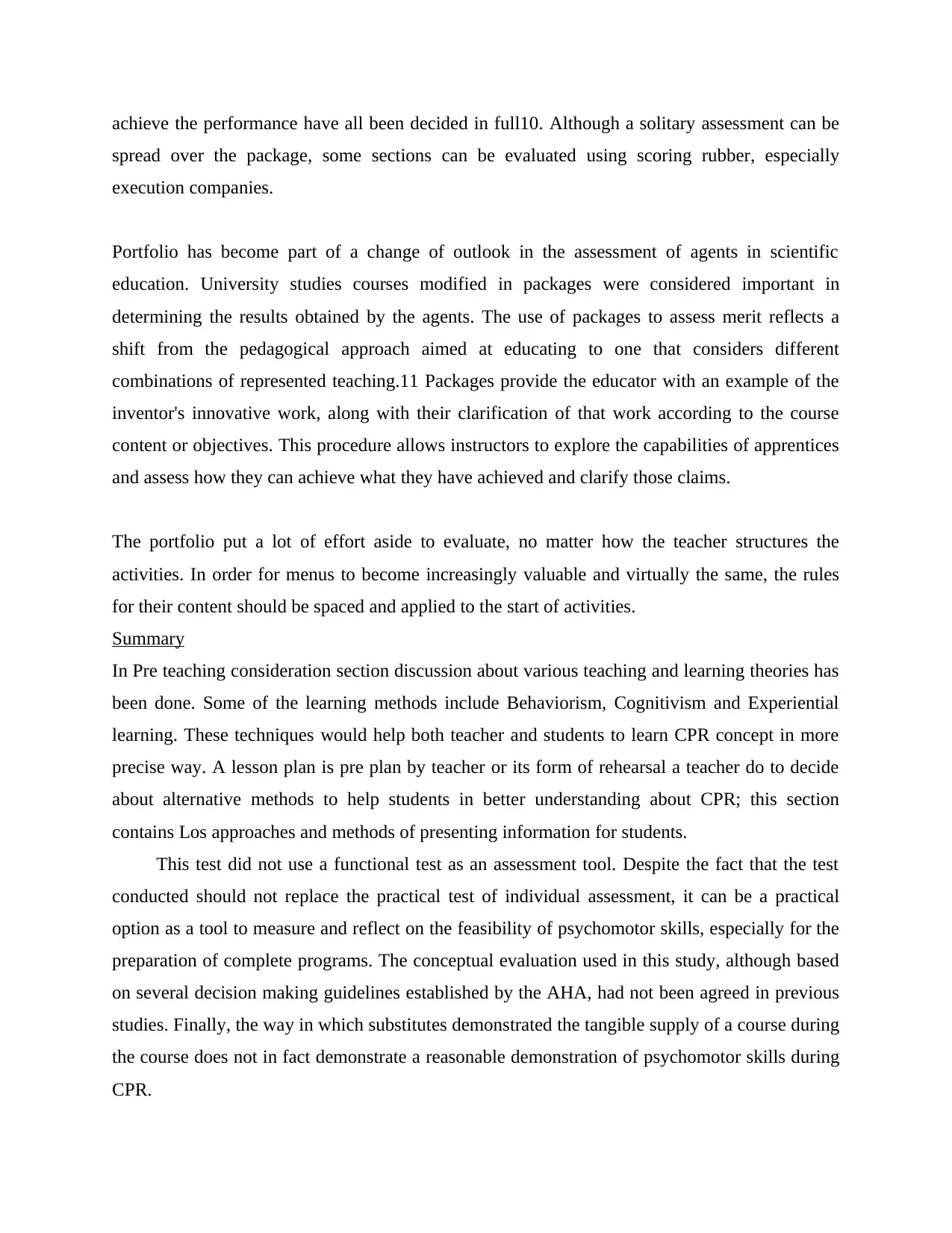Learning Plan Analysis: Theories, Assessment Methods, and Strategies
VerifiedAdded on 2023/01/10
|4
|1116
|68
Homework Assignment
AI Summary
This assignment provides an analysis of learning theories and assessment methods. It begins by exploring various learning theories, including behaviorism, cognitivism, and experiential learning, highlighting their core principles and applications in educational settings. The assignment also delves into different teaching styles, such as the directing and discussing styles, and how these approaches can influence student engagement and learning outcomes. Furthermore, the document examines various assessment methods, including testing, writing assignments, and portfolio reviews, discussing their strengths and weaknesses and how they can be effectively implemented to evaluate student learning. The assignment also incorporates elements of a learning plan, with a focus on CPR, and discusses the application of these theories and methods in practical scenarios, offering insights into how educators can enhance teaching and learning experiences. The document emphasizes the importance of aligning assessment methods with learning objectives and providing constructive feedback to students. It concludes with a reflection on the effectiveness of different assessment strategies and their impact on student performance.
1 out of 4











![[object Object]](/_next/static/media/star-bottom.7253800d.svg)